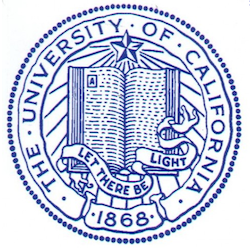 With first counts of Fall 2016 applicants totaling 206,339, the competition for University of California (UC) admissions will be even greater for current high school seniors and community college transfer students. A recent Atlantic Monthly article highlighted the steep odds for admissions of today’s UC applicant.
With first counts of Fall 2016 applicants totaling 206,339, the competition for University of California (UC) admissions will be even greater for current high school seniors and community college transfer students. A recent Atlantic Monthly article highlighted the steep odds for admissions of today’s UC applicant.
The UC has educated generations of Californians in the last century—making applying a rite of passage for any California youth. But, the UC of our grandparents and parents and even my generation is not the same UC for today’s applicant. (Full disclosure: this author is a University of California graduate.)
For certain UC hopefuls, that [application] deadline [November 30, 2015] marked the culmination of years of sleep deprivation and SAT prep, writing-center visits, new extracurriculars, and one last frenzied Thanksgiving break.
Yet, with three UC campuses exceeding 100,000 applicants each—UC San Diego at 102,692, UC Berkeley at 101,665 and UC Los Angeles at 119,326:
tens of thousands of this year’s UC applicants won’t be admitted to any campus—and at most of the schools, a majority of applicants will get rejection letters.* That applies to both in- and out-of-state students; even some of the brightest and most qualified of the bunch won’t make the cut.
Not only do record numbers of applicants applying annually increase competition for admissions:
today’s applicants simply aren’t “the same students that we were educating in the ‘60s,” said Nina Robinson, the UC’s associate president and chief policy advisor; they’re far more prepared to enter college than their predecessors.
Translation: with more applicants who have similar grades, test scores, classes and extracurricular activities, the decisions of who to admit and who not to admit are more complicated, leaving room for subjectivity in the evaluations, and many applicants (and their parents) to complain that decisions are arbitrary.
And according to Michele Siqueiros, the Campaign for College Opportunity’s (CCO) president, that means “students need to be virtually perfect to get a spot at the University of California.”
The higher qualifications for admissions is rocketing average GPA’s and test scores of admitted students:
At six of the nine undergraduate UC schools, the average GPA among admitted students last year was higher than 4.0. (The UC gives students a GPA bump for taking AP courses.) At the three most competitive campuses—Berkeley, UCLA, and UC San Diego—the median scores on the 2400-point SAT were 2140, 2120, and 2070, respectively.
In light of inflating GPA and test score averages, students and the parents “hedge” their opportunities for admissions to any UC campus, and end up applying to multiple UC campuses simultaneously. Thus, increasing the numbers of applicants annually and contributing to the statistical competitiveness for admissions.
Further complicating the admissions decision-making, each UC campus has their own admissions goals. In essence, any one UC campus must first admit enough applicants, in order to yield enough students to eventually enroll, thus “enough” tuition-paying students, who will collectively cover the fiscal needs of the university. But, anticipating that each applicant has applied to multiple UC campuses, as well as other private universities, admissions decision-making can become an “artful-educated-guess”.
The main problem now is that admission to most UC campuses has grown so competitive—and state funding and physical space have become so scarce—that scores of qualified in-state students are getting turned away, the CCO says.
When qualified California residents are “turned away” from the UC of their predecessors, tax-paying parents are angered their children are being denied opportunities in their home state.
Compounding the frustrations of California taxpayers, the competitiveness of college admissions is “trickling-down” to the 23 campus California State University (CSU) system.
Even some of the California State University campuses—which draw from the top third of the state’s high-school graduates—have been rejecting qualified applicants.
The university system had to deny admission to tens of thousands of eligible students between 2009 and 2014, says the CCO report.
For California residents with a 2.0 GPA and 1300 SAT score (combined Critical Reading and Math only) are eligible and admissible to a CSU. However:
In fact, roughly one in four of the system’s 23 campuses now has admissions standards that are higher than the baseline CSU eligibility requirements, a phenomenon known as impaction.
While the CSU acknowledges the admissions issues, CSU officials also downplay the overall consequence of competitive admissions for potential applicants:
“Impaction doesn’t mean ‘there is no room at the inn.’ It means that space is limited,” Toni Molle, a spokeswoman for CSU, said in an email. Students who are less likely to get accepted at their first campus of choice, she added, are “borderline” applicants, whose GPAs and test scores barely meet eligibility requirements.
I disagree that denied students are “‘borderline’ applicants.” A student I advised, just last year, is now a freshman at Harvard University, but was waitlisted to Cal Poly, San Luis Obispo. And, this student serves as even further evidence of a degree of subjectivity in admissions, even in an evaluation system that only considers numbers—GPA and SAT or ACT test scores—in determining admissions.
While competitive college admissions can create pressures for applicants and parents in the intermediate and immediate terms, the long-range economic impacts of narrowing college admissions may hamper California’s future:
Officials anticipate they’ll need 1.1 million additional workers with bachelor’s degrees by 2030 to meet those needs. And the state already has the nation’s lowest percentage of undergraduate students enrolled in a four-year university.
Higher education is an upfront cost with unknown, future returns. For now, Californians continue to apply in record numbers to the UC and CSU systems; however, with the national student debt total topping $1.3 Trillion, the younger generations may be sacrificing their futures in pursuit of a higher education that is not always achievable, even for qualified students.



